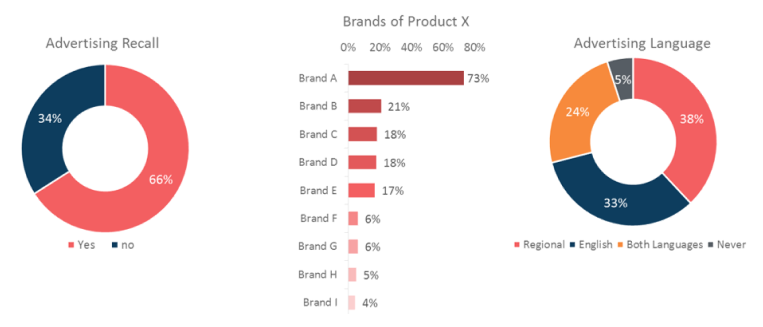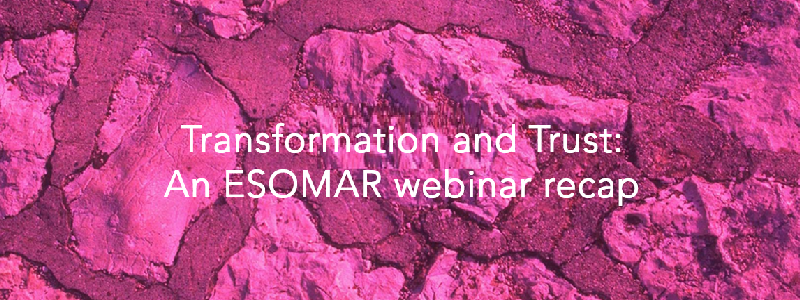By E2E Research | March 31, 2021
On March 31, 2021, ESOMAR hosted a flagship series webinar on trust which was moderated by Fiona Blades from MESH Experience and Maya Kantak from Disney Parks.
The speakers defined and described trust in a number of ways. Paul Neto described it as “consistency over time with positive experiences.” Jeff Marshall and Rogier Verhulst shared that people who trust a brand are more likely to defend it, advocate for it, buy from it, and stay loyal to it. On the other hand, they explained that people can trust a company because they do what they say they will do but, at the same time, they might not trust other aspects of the business. Rob Key clarified that having trust with the brand or the company doesn’t equate to them being right or wrong, or good or bad. For instance, we trust that Amazon will deliver our package tomorrow but we might not trust how they treat our data.
Ann Constantine shared that in their company, they build trust from the bottom up through a consultancy process of creating ownership with the people who implement those processes every day.
Paul Neto discussed trust as it applies to the research industry. Right now, only about a third of people trust market research. The consequence of insufficient trust is that a third of people will refuse to participate in research and a third will limit the information they share. By building trust, researchers and marketers can unlock more consumer data. We need to be more transparent about the research experience by telling people what’s happening with their data, why they were screened out, and why the survey and incentive weren’t the length they expected. We need to step away from privacy by compliance and move to privacy by design. When we don’t meet these basic expectations, we lose trust and we lose valuable data. An interesting idea Paul raised is whether our attempts to improve the research experience are simply patchwork fixes. Perhaps if people trusted us more, we wouldn’t have to enforce shorter surveys or worry about mobile-first designs. People would trust our words and follow our advice.
Nicolas Pochart shared a fascinating example of GSK’s “Consumer Closeness Program” wherein their research & development scientists spoke directly to consumers using virtual qualitative tools. Though they didn’t see any cost savings and it was actually extra work, talking directly to consumers was a huge success. The scientists were nervous ahead of time because they’d never talked to consumers before. However, they enjoyed the experience and confessed they will remember those consumers’ words forever. It changed how they think about their work. In 2021, GSK will have 500 R&D scientists talk to consumers. It won’t replace their regular qualitative research, but it definitely helped to put consumers at the center of the conversation, it created empathy with the scientists, it helped them understand consumer language, and it was vastly more impactful than receiving a 200-page PowerPoint file.
Jeff Marshall and Rogier Verhulst shared how they measured trust at LinkedIn. In 2020, LinkedIn registered the most digital trust among social networks. This trust is at least partly because of the individual authentication that is built into the network. People have to behave well to ensure their career and company are successful. Further, LinkedIn doesn’t allow open APIs and they don’t share their data with third party publishers. To measure trust, they conducted a major research study using narrative analytics and machine learning models to discover the best trust metrics. They followed that up by building a trust tracking program with interviews, focus groups, and surveys. The model is very important because it allows them to identify up and coming problems and be prepared to resolve those problems before it becomes too difficult. This is particularly important because of halo effects – when another social network experiences a trust issue, it can easily be reflected onto other similar brands.
Duncan Southgate and Gonca Bubani shared their thoughts on trust in the media. They’ve identified that trust is correlated with purchase and the growth of a brand’s value growth over time. Right now, traditional media, like TV ads, receives the highest trust scores but it’s still very low. When it comes to media channels, Google is the most trust media channel followed by YouTube and Instagram. As we’ve heard so often, people feel the media is biased. A single opinion can have extremely far reaching implications quickly leading to a loss of trust. Media can improve their trust scores by being more relevant, useful, authentic, innovative, fun and entertaining, and ensuring advertisers using their platforms are trustworthy.
Speakers and topics from this webinar included:
- Ann Constantine, Direct Line Group: From Top Down to Bottom up: Transforming Direct Line Group’s Measurement Approach
- Duncan Southgate and Gonca Bubani, Kantar: Trust in Media – The New Publishing Battleground
- Jeff Marshall, Protagonist and Rogier Verhulst, LinkedIn: Building and Measuring Customer Trust at LinkedIn
- Nicolas Pochart, GSK Consumer Healthcare: Transforming our Organisation Through Consumer Closeness
- Paul Neto, Measure Protocol: Exploring the Use of Trust Principles to Unlock the Next Generation of Consumer Data Collection
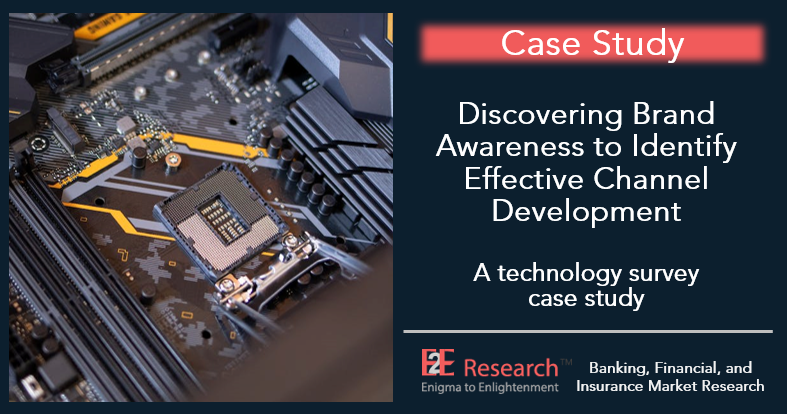
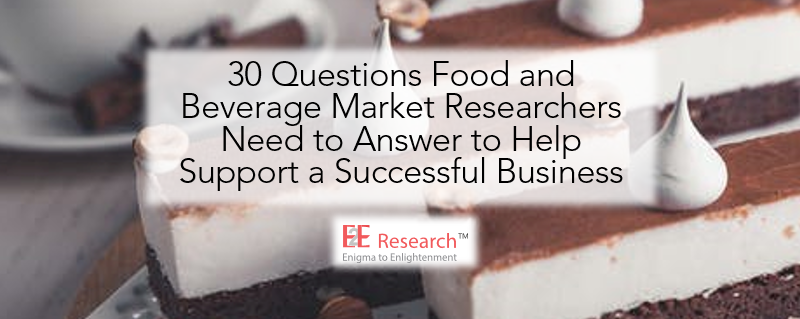
 At the heart of a successful food or beverage business is a carefully researched and designed product that meets the key needs of its target audience – yes, even food and beverages products have key needs. By conducting
At the heart of a successful food or beverage business is a carefully researched and designed product that meets the key needs of its target audience – yes, even food and beverages products have key needs. By conducting  Before a new food or beverage product is even launched, it’s important to understand the perceptions of all key stakeholders. From eaters to shoppers and those who will be preparing or recommending the product, it’s imperative that each group understand the benefits and drawbacks of the product to ensure maximum success. Using questionnaires,
Before a new food or beverage product is even launched, it’s important to understand the perceptions of all key stakeholders. From eaters to shoppers and those who will be preparing or recommending the product, it’s imperative that each group understand the benefits and drawbacks of the product to ensure maximum success. Using questionnaires, 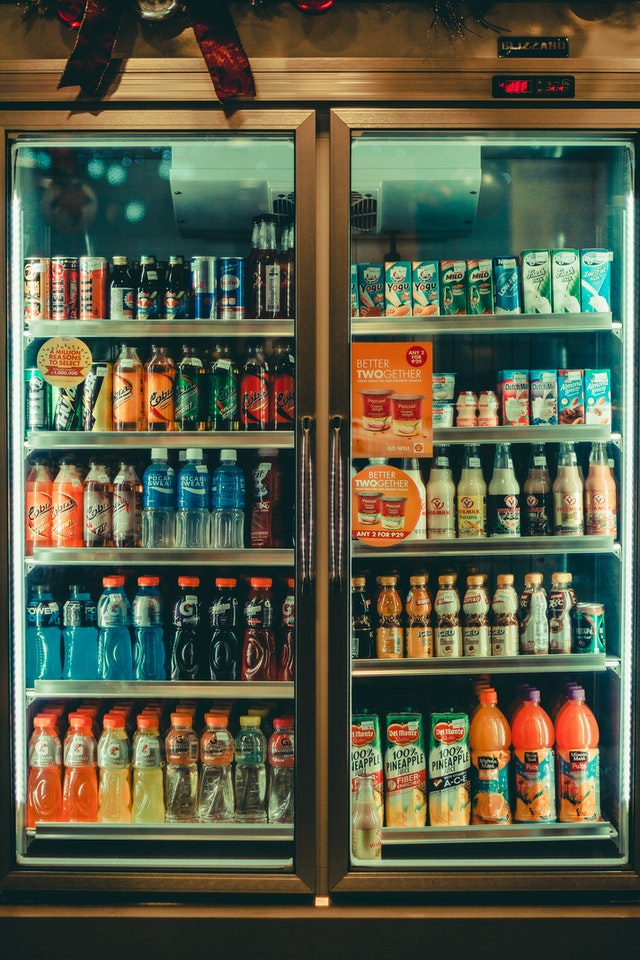 Every food and beverage product exists within a broad ecosystem of competitive brands and companies. By
Every food and beverage product exists within a broad ecosystem of competitive brands and companies. By  With a great food or beverage innovation and a well understand target audience, a marketing campaign is often required to reach out to a wider audience and introduce the masses to your offering. Using questionnaires or data analytics, a number of key questions can be answered:
With a great food or beverage innovation and a well understand target audience, a marketing campaign is often required to reach out to a wider audience and introduce the masses to your offering. Using questionnaires or data analytics, a number of key questions can be answered: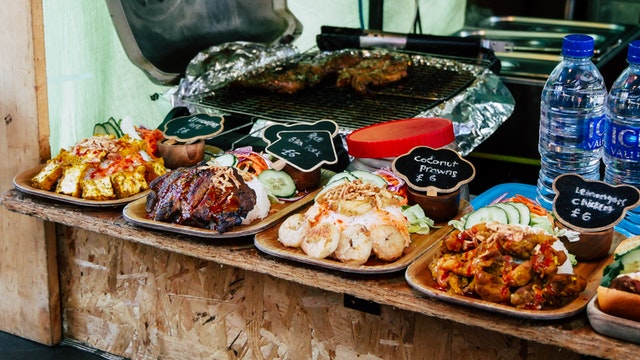 There is more to pricing than picking a number that will generate profit. A price that is too high can reduce recommendations from friends and family. A price that is too low leaves achievable profit on the table. A final price can only be determined by understanding your true profit margin, market pricing, and stakeholder needs. To build the most effective pricing strategy for your new food or beverage, conduct the appropriate surveys, interviews, and secondary research first.
There is more to pricing than picking a number that will generate profit. A price that is too high can reduce recommendations from friends and family. A price that is too low leaves achievable profit on the table. A final price can only be determined by understanding your true profit margin, market pricing, and stakeholder needs. To build the most effective pricing strategy for your new food or beverage, conduct the appropriate surveys, interviews, and secondary research first.
